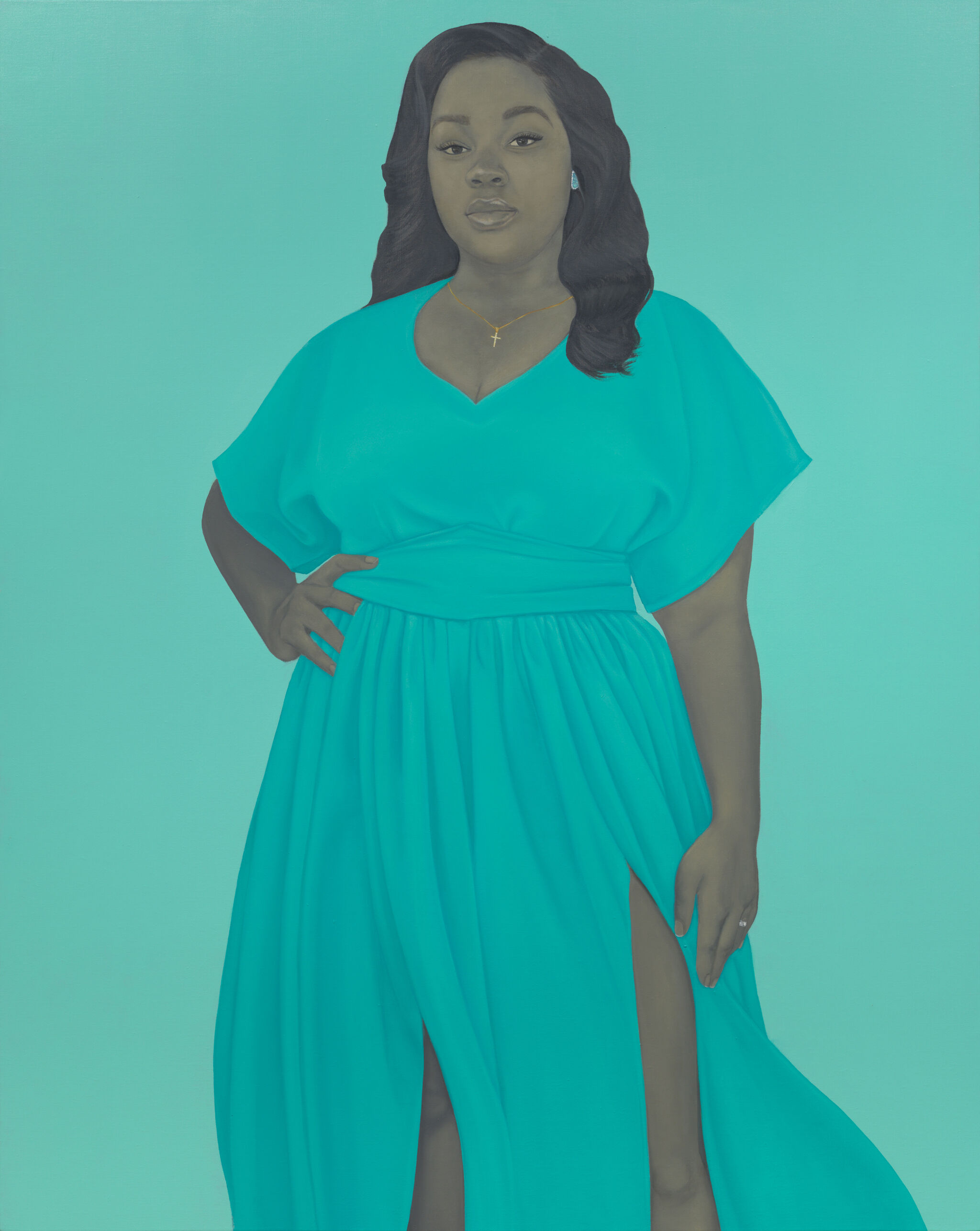Amy Sherald: American Sublime | Art & Artists
Apr 9–Aug 10, 2025
Amy Sherald: American Sublime | Art & Artists
5
Sherald often draws on imagery—a beauty queen, a sailor returning from war, a farmer, a white picket fence—that symbolizes American identity and history. Simultaneously acknowledging and critical of the sustained resonance of such national myths and related ideas of freedom, beauty, and success, her work addresses the absence of Black people from these defining stories and invites reflection on their misrepresentations and omissions, both past and present. The title of this exhibition, American Sublime, hints at this complexity. It invokes Elizabeth Alexander’s 2005 poetry collection of the same title, which considers centuries of African American creativity, history, and culture. At the same time, it nods to Sherald’s interest in the philosophical concept of the sublime—or being overcome by emotion in the face of art or the natural world. As her paintings demonstrate, this same emotional groundswell can be summoned by the American people, in all their range and beauty.
Breonna Taylor, 2020
Breonna Taylor was a twenty-six-year-old emergency room technician who was killed in March 2020 by police officers from the Louisville Metro Police Department (LMPD) who forced entry into her home. Her tragic death highlighted the disproportionate levels of police violence enacted against Black Americans.
Vanity Fair magazine commissioned Sherald to create this portrait of Taylor for its September 2020 issue. In preparation, Sherald met with Taylor’s mother, Tamika Palmer, to learn about the person her daughter had been. Drawing on these conversations, Sherald took care to incorporate several symbolic references to Taylor’s life and interests. These include the dress she wears in the painting, which Sherald commissioned from Jasmine Elder, a Black female designer, and the engagement ring on her finger, representative of the love between Taylor and her partner, Kenneth Walker, and the future that was taken from them. Sherald has stated that she made this work to “codify that historical moment, and in honor of all the lives that were lost—specifically, the Black women we lost to police brutality.”

